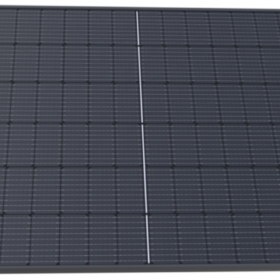US solar cell production could double in less than two years
US solar cell production is set to double in under two years, driven by growth in domestic content. Anza shares second-quarter 2025 insights into the solar supply chain amid uncertainty.
What to know about drone-in-a-box technology for utility-scale solar O&M & Construction
Drone-in-a-box (DIAB) technology has several applications for utility-scale solar operations and maintenance (O&M). Deployed wisely, it can simplify performance tracking, enhance site management, and mitigate risk across various stages of a project’s lifecycle. In this pv magazine Webinar, we will see how it works and discuss how to implement it.
Boviet Solar opens solar production facility in North Carolina
With an investment reportedly approaching $400 million, the manufacturing plant will be built in two phases with phase one producing 2 GW of solar modules and phase two expected to produce 2 GW of solar cells in 2026.
U.S. startup offers new solar cell copper metallization paste
Bert Thin Films has developed a copper paste for solar cell manufacturing that keeps the copper from oxidizing during the air-firing process while at the same time avoiding it to make direct contact with the silicon. The new product can be used in existing production lines and with different cell configurations.
Balcony solar gains US foothold with plug-and-play systems
Bright Saver, a San Francisco-based nonprofit, aims to bring the European balcony solar trend to US homes with low-cost, plug-in systems that require no interconnection approvals or permits in some jurisdictions.
Tigo Energy releases off-grid solar package
The off-grid solution includes module optimizers, an inverter, a battery, and an automatic transfer switch.
North American solar PPA market remains stable in Q1 2025
Solar power purchase agreement (PPA) prices in North America held steady in the first quarter of 2025, averaging $57.04/MWh, up 1% from the previous quarter, says LevelTen Energy.
US-based Complete Solaria rebrands as SunPower
Complete Solaria says it acquired SunPower’s assets for $45 million after its bankruptcy, then sold its shingled module patents to Maxeon, which is now owned by China’s TCL Group.
Enphase misses Q1 2025 revenue target, trims margin outlook on tariffs
Enphase Energy has posted $356.1 million in revenue for the first quarter of 2025, falling short of expectations. The solar microinverter and battery storage provider says it has lowered its margin outlook due to rising tariff pressures.
US solar industry to add 502 GW (DC) of capacity in next decade
Wood Mackenzie warns that policy uncertainty could significantly alter its projections for US solar industry growth. The research firm says the US solar industry will add 502 GW (DC) of capacity over the next decade, with annual installations surpassing 40 GWdc through 2035.









